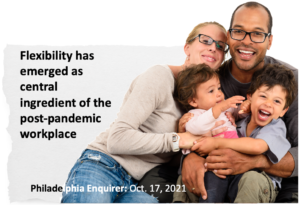 Irregular workers are barely reflected in official data or targets. But adapting services for this eruption in labor markets can be cheap with quantifiable benefits.
Irregular workers are barely reflected in official data or targets. But adapting services for this eruption in labor markets can be cheap with quantifiable benefits.
.
.
What’s the return?
It’s a chicken-and-egg: Better data on irregular employment is needed to justify launching an improved marketplace. But there won’t be deep, verifiable, data without a more comprehensive market. So, we suggest incremental steps to an understanding of local possibilities and challenges. Doing this unearths the best current data.
 First step towards possibly supporting the irregular workforce can just involve convening labor market stakeholders. How ready are key employers, public sector bodies, and intermediaries to catalyze any local service? Are there initiatives, pain-points, or champions that could easily kickstart a better market?
First step towards possibly supporting the irregular workforce can just involve convening labor market stakeholders. How ready are key employers, public sector bodies, and intermediaries to catalyze any local service? Are there initiatives, pain-points, or champions that could easily kickstart a better market?
The return on a few hour’s work to put together a roundtable should be a first assessment of local appetite for action. Options can then be considered. There are small-scale interventions with traditional cost/benefit analysis: Teach X people how to market themselves as gig workers at $Y each to see an income gain of Z%. But how to analyse a more fundamental, sustainable, scalable option like initiating a local GoodFlexi iteration?
Testing the waters
A small project team can fully research readiness among potential market participants. Realistic messaging de-risks the project: “We are not committing to launch, we are exploring launch”.Only if everything required for a robust, financially-sustainable, organically-growing, local market is in place, might a platform get turned on. Doing this work can produce defensible estimates for savings/growth generated by launch.
What’s the charge for setting up a market? The tech. that came out of UK government programs is in a non-profit to be open sourced. But there are operating costs for any secure, maintained, system. One criteria for launch could be that there must be enough spend committed to the local market for it to fund itself, and some oversight, with perhaps a 2.5% charge built seamlessly into the price of each hour sold.
These are some issues where it’s worth looking at the broad returns from a successfully launched version of GoodFlexi:
.
 Expanding access
Expanding access
However low official unemployment falls in future there will be many thousands of extra hours in your area that people wanted to work today. 52% of America’s workers seek about 20% more work. 70% of those out of the workforce have medical or care-giving commitments that constrain their availability.
What would follow if employers had visibility and immediate access to these currently hidden hours? How could pinpoint data be used to allocate training dollars? Can likely growth in labor market participation and benefits of removing brakes on business expansion be quantified?
A localized version of GoodFlexi can be constantly attractive to fringe workforces. Seeking a few hours extra work this evening? If you choose to access them effortlessly in a broad, deep, official local market you will have connected into workforce services. If you otherwise would have worked illegally or stayed at home, that has improved your future earning potential.
Working through an official channel could be decisive when the economy shrinks. Individuals will be able to release verified data on their reliability record, practical skills, and any past interventions for which they had qualified. That could simplify application for stimulus or other assistance.
.
Local resilience
Some outputs of a local market that could be quantified within a “market making” project:
 Out of the shadows: California alone loses $8.5bn a year in tax from unreported wages. Figures like this can be mapped onto the potential GoodFlexi area. Could a new market tempt buyers and workers out of illegal activity where lack of convenient, low-overhead, legitimate channels for labor is the problem?
Out of the shadows: California alone loses $8.5bn a year in tax from unreported wages. Figures like this can be mapped onto the potential GoodFlexi area. Could a new market tempt buyers and workers out of illegal activity where lack of convenient, low-overhead, legitimate channels for labor is the problem?- Employer attraction: A city might be vying to be the site of a new distribution hub. Officials could show today’s local GoodFlexi data; How many hours of top-up warehouse workers are available and willing to work at that location? With what skills? Where’s the adjacent pools of provenly-reliable workers ready to be cross-trained? Access to reliable top-up workers could be pivotal in attracting businesses that also create jobs.
- Disaster response: Immediate access to thousands of local peoples’ hours with visibility of skills, experience, and terms of work could be invaluable if hurriedly staffing up to search, evacuate, contain or repair areas hit by crisis. Assuming that workforce already exists, there will be benefits from faster mobilization.
- Welfare off-ramp: Getting a traditional job can be terrifying, or impossible, for people with complex life circumstances. But an hour or so’s work this afternoon, maybe a few more hours later in the week, perhaps a full day when they’re ready? Can this humane progressive transition into work significantly help the journey to self-reliance for a reasonable percentage of claimants?
- Support functions: Access to child minders, home health aides, or workforce navigators are often crucial for ability to work. A better market makes them more accessible.
.
Business Case for workforce boards
 America’s public workforce boards typically have the relationships, stability, neutrality and operating expertise required to extend employment services to irregulars. But a Government Accountability Office report found a key problem with supporting “gig workers”; the challenges of gathering data on outcomes. A better regional market for hourly labor would solve the data shortfall.
America’s public workforce boards typically have the relationships, stability, neutrality and operating expertise required to extend employment services to irregulars. But a Government Accountability Office report found a key problem with supporting “gig workers”; the challenges of gathering data on outcomes. A better regional market for hourly labor would solve the data shortfall.
Can mainstream funds for workforce development assist irregular workers? Alignment with three indicators is worth examining:
- Employer engagement: Only 36% of non-college employers are reported to use workforce services. One state board recently surveyed employers on what they wanted; only 65% said traditional employees. There is a world of organizations using non-standard labor for whom workforce boards currently lack relevance. Get a GoodFlexi launch right and there’s an immediately expanded pool of businesses to serve.
- Credentials: If digital badging and employer inductions are counted, GoodFlexi should have people who prove reliability attracting training and progressing.
- Progression: Some irregulars want a job and GoodFlexi could certainly be the route. But there is also self-employment. Some states, led by Florida, allow a person to declare themselves self-employed without having to incorporate. Someone working for a portfolio of organizations in GoodFlexi could attain this target if desired.
 More broadly, a business case can be built around target groups that GoodFlexi puts on a pathway to jobs. Youth often favour flexible work, disabled people may need to work in ways they control day-to-day, veterans can be offered progressive routes into obvious-fit sectors with fluid needs; security, logistics, catering, driving.
More broadly, a business case can be built around target groups that GoodFlexi puts on a pathway to jobs. Youth often favour flexible work, disabled people may need to work in ways they control day-to-day, veterans can be offered progressive routes into obvious-fit sectors with fluid needs; security, logistics, catering, driving.
.
Other funding
If a Governor, Mayor or philanthropy funds GoodFlexi locally, they could impose targets measuring outputs specific to the irregular workforce. Targets might include:
- Utilization: What percentage of hours offered are being booked by employers?
- Labor Market entry: How many work-seekers couldn’t work other way? What’s the aggregated trajectory for those tagged as new to the workforce?
- Progression: On average, what’s the trend for workers’ income, rate of adding skills and hours worked each week?
Any target can be confined to a sub-set of work-seekers: “I want a 30% increase in single-Moms’ rate-per-hour in the east of the city by Christmas”.
..
 Compelling factor for business cases
Compelling factor for business cases
Irregular employment is booming post Covid. Initiating a fair, sustainable model is probably a “when?” not an “If”.
